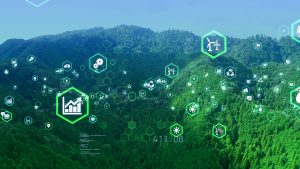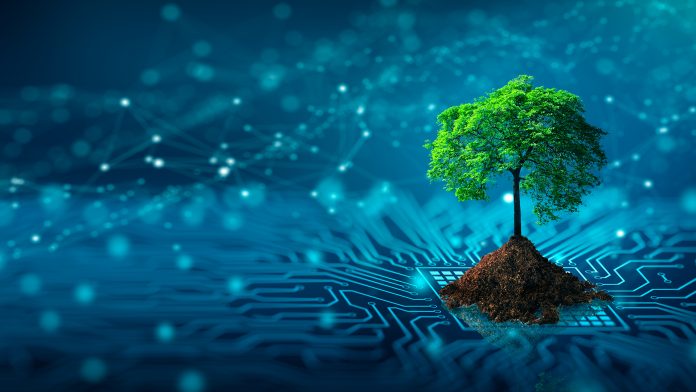Matt Tormollen, CEO of POWWR, discusses how innovative technology like AI and Machine Learning will be key drivers of the green energy transition.
After numerous false dawns, energy companies are firmly transitioning away from fossil fuels and adopting more sustainable energy production and consumption forms. In fact, renewables’ share of the power generation mix is set to rise to 35% by 2025.
Whilst a major catalyst has been increased customer demand for renewable energy, another has been the emergence of innovative technology that has facilitated this green energy revolution.
Software, in particular, is playing a significant role in how the industry has been able to build the systems and processes necessary to clean up its act. But what are the key areas, and what changes will we see in 2024?
Harnessing innovative technology for a digitised future
On the industry’s path to net zero, innovative technology is facilitating everything from providing an end-to-end connected journey for energy sales to managing risk at a time of unprecedented price volatility.
However, it is in the areas of solar, electric vehicles (EVs), and heat pumps that it is perhaps being seen the most.
The solar market continues to scale rapidly worldwide. One of the reasons is that there are not many IT stack incumbents to circumvent. However, the solar installation process itself is complex.
Therefore, various innovative software solutions have emerged to digitise this solar lifecycle from site selection to ongoing maintenance. Central to this has been those that ensure that the solar farms themselves are placed in the optimum locations. As solar adoption continues to swell, we will only see more software solutions emerging to facilitate the change.
By the end of the decade, EVs are projected to represent the majority of new car sales. Software is already touching every aspect of the value chain, from battery analytics to charging to fleet electrification.
Yet, in 2024, I predict more solutions will be launched that will build on top of existing charging offerings to provide billing and payment solutions that strengthen the ecosystem.
The UK, like other countries, has government grants to encourage end users to switch from traditional gas boilers to modern heat pumps. Yet, the recently announced £10 million that is to be made available through the Heat Pump Ready Programme to support innovation in the sector is what will likely drive it forward in 2024.

This innovative software could be used to facilitate heat pump design, speed up proposal creation, and improve the time it takes for contractors to assess a home’s readiness for heat pumps.
The use of AI in forecasting
Of course, like other industries, the energy sector is starting to use Artificial Intelligence (AI) to streamline mundane tasks and reduce the propensity for manual errors.
In an industry such as energy, the latter is particularly important as the ramifications of an error can be catastrophic.
AI and Machine Learning are being used particularly effectively on the forecasting side. Whereas fossil fuel demand used to be variable, supply was relatively constant.
However, with renewable energy, it is the other way around. A wind farm is not particularly useful without wind, and a solar farm is not especially useful without the Sun.
Therefore, optimum weather forecasting is imperative so that energy suppliers can make informed decisions and load-balance the network effectively. Remember, though, that AI is only as good as the data that flows into it.
Data is driving accountability
Data is also driving accountability. In the past, certain suppliers have been accused of using deceitful marketing gimmicks to exaggerate their environmentally friendly actions.
However, consumers are remarkably savvy, and those suppliers have recognised the need to leave such ‘greenwashing’ behind and to become accountable.
However, it has not been straightforward. Energy has become increasingly decentralised as it has become decarbonised. Ensuring complete energy genealogy throughout the supply chain has, therefore, been remarkably difficult due to a lack of consistent data.
However, innovative technology such as Internet of Things (IoT) sensors are now being used to facilitate accountability by collecting energy data from a whole host of distributed devices. This data can produce a certificate of authenticity – such as a Renewable Energy Certificate (REC) – proving that the energy generated is from the renewable sources it claims.
As data becomes more prevalent and accessible in 2024, energy management solutions will become more precise and amplify the benefits customers can derive from renewable energy. They can save on energy costs by procuring energy from the cheapest supplier or facilitating energy use when rates are cheapest.
The key enabler to the green energy revolution
The industry’s combined move towards net zero has led to a need for innovative software to both optimise physical asset performance and increase the accountability of the supporting energy ecosystem.
So much so that many legacy oil and gas service providers themselves now view themselves as technology service providers. For example, just last year, oilfield services giant Schlumberger rebranded itself as a digital services provider and supporter of cleaner energies.
Whilst the innovative technology that is needed to address our energy challenges will take many forms – whether that be using AI to better forecast the weather or using IoT sensors to provide the intelligence to optimise delivery – there is no doubt that it has become the key enabler to the green energy revolution.









